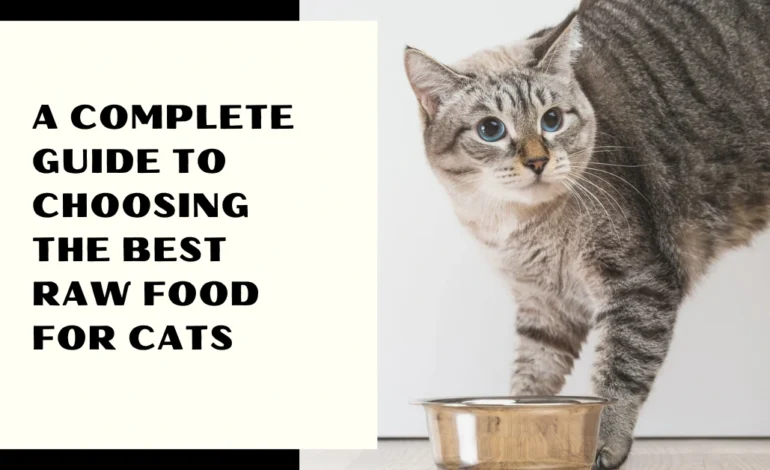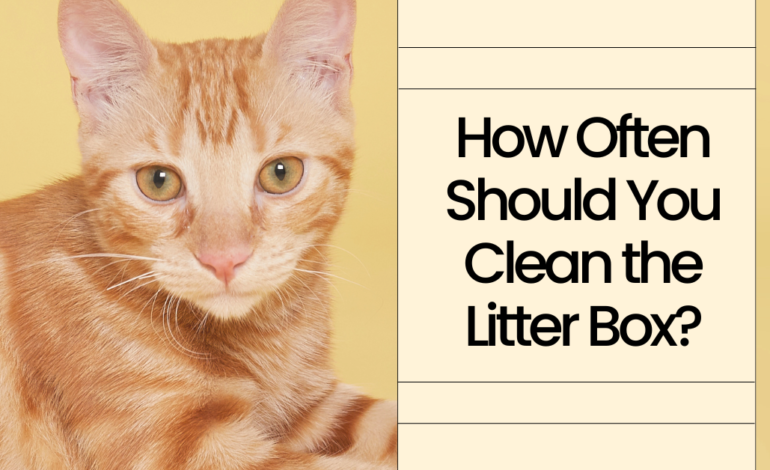A Complete Guide to choosing the best raw food for cats
- By MeowCareHub
- January 27, 2025

Feeding cats a raw diet is a trend pet owners have clung to with great interest in hopes of its many potential benefits, including shiny fur, increased energy, and an overall improvement in digestion. Raw-feeding advocates generally believe that this is similar to what wild cats eat, thus inducing the real deal: essential nutrients in the least processed form.
With this trend on the rise, raw diets are gaining popularity as cat parents look to incorporate healthier and more natural ways to feed their pets. Unfortunately, in the Raw Cat Diet world, not all raw foods for cats are created equal-and making an informed choice is the key to offering your feline a balanced, safe, nutritious diet.
This guide is intended to help you navigate your way through raw cat food, find out its benefits, and select the best raw cat foods that shall keep your kitty fit and healthy.
Understanding Raw Food Diets for Cats
Raw food diets for cats attempt to come close to what they would eat in the wild: raw meat, bones, and organs. Such diets are replete with essential nutrients, including high-grade protein, taurine, and healthy fats, normally intended to supply for a cat’s physiological needs. Some benefits of raw food for the cat include improved digestion and better absorption of nutrients, which may help resolve common digestive complaints with cats. Cats fed raw diets also develop a shinier coat, healthier skin, and stronger teeth and gums, largely due to the high-nutrient content of the foods they are fed. Raw diets also allow better weight management and increased energy levels, adding to a cat’s overall vitality and health.
Key Factors to Consider When Choosing Raw Cat Food
- Balanced Nutrition: The food should provide complete protein, vitamins, and minerals.
- Top-Class Ingredients: Select fresh, ethically-sourced ingredients.
- Life-Giving Nutrients: Examine for taurine; omega-3 fatty acids; and other substances that help the health as a whole.
- Free from Additives: Don’t have preservatives, fillers, or synthetic additives that can harm your pet.
- Safety Certifications: The product must adhere to recognized standards related to the safety of pet food being prepared or handled.
Types of Raw Foods for Cats
- Commercial Raw Cat Food
- Pre-packaged Raw Food: Frozen, freeze-dried, or dehydrated. They contain pre-measured portions balanced for your convenience.
- Pros: Convenient nutrition, balanced and safe for cats with the highest ingredient quality, with less prep time and fewer safety concerns than homemade diets.
- Cons: Usually more expensive than homemade options; some cats may be picky because of the texture or taste.
- Homemade Raw Diets
- Steps to Prepare: Make raw food at home by sourcing high-quality meats, bones, and organs. Recipes should be balanced; proteins, fats, and essential nutrients should be included.
- Essential Recipes and Nutrient Guidelines:Include organ meats like liver and kidneys, bone for calcium, and muscle meat for protein; you may also need to supplement with vitamins and minerals.
- Tools and Equipment Needed: Meat grinders or food processors, freezer-safe storage containers, and a kitchen where you can safely work on and store the food.
- Combination Feeding
- Mixing Raw Food: A more gradual approach to raw feeding is mixing raw food into dry or wet food. This can help transition your cat to a raw diet easier. As your cat grows accustomed to raw, you can gradually increase its raw portion and decrease the other food types.
Transitioning Your Cat to a Raw Food Diet
Transitioning your little feline friend over to a raw food diet should be done gradually to wear some spare time for a smooth switch and minimize gastrointestinal upsets. First, get them started with a small quantity of raw food mixed with their dry food, and gradually build up the amount of raw food over the next few days or weeks. In this way, you will allow your feline time to adjust to new food in the digestive system.
Generally, it may depend upon the cats themselves, as some are fussy eaters and adamantly refuse to start raw food. For instances, try ever so slightly warming the food; warm food is often enticing for animals due to its fragrance. Mix a little raw with a favored treat. If your cat has truly refused to eat this, keep offering it knot by knot and don’t push it. Be patient.
Now is the period to observe closely what happens with your cat in relation to the coat, energy, and digestive health during the time of transition. If any signs of distress appear, for example, vomiting, diarrhea, or loss of appetite, either slow down the transition time or contact the vet to ensure the new raw food diet is suitable for your specific kitty. Adjust your moves up or down regarding how your particular cat reacts for the variously smooth and successful transitions.
Best Raw Cat Foods in 2025
| Brand | Features | Buying Link |
| Primal Freeze-Dried Raw Cat Food Nuggets | – Made with cage-free chicken and salmon.- Grain-free, high in protein.- Includes probiotics for digestive health.- No artificial preservatives. | Buy Here |
| Stella & Chewy’s Freeze-Dried Raw Dinner Morsels | – 98% meat, organs, and bone from sustainably sourced animals.- Includes probiotics and taurine for heart health.- Grain-free, available in various flavors. | Buy Here |
| Steve’s Real Food Freeze-Dried Raw Nuggets | – Made with free-range meats, hormone-free.- Fortified with goat’s milk.- No fillers, nutrient-rich. | Buy Here |
| Merrick Backcountry Raw Infused Dry Cat Food | – Combine freeze-dried raw morsels with kibble.- High-protein, grain-free with poultry/fish as the first ingredient.- Made in the USA. | Buy Here |
Safety Tips for Feeding Cats Raw Food
- Food Safety and Storage:
- Gently handle raw ingredients to avoid cross-contaminations and wash hands before and after handling the raw food.
- Raw ingredients must be stored in the freezer or refrigerator and always thawed inside the refrigerator. Never thaw at room temperature.
- Raw ingredients must be stored in the freezer or refrigerator and always thawed inside the refrigerator. Never thaw at room temperature.
- Prevention of Contamination and Food-borne Diseases
- When handling raw food, you must always be hygienically inclined. You must require separate cutting boards, utensils, and dishware for raw pet food.
- Hidden not allow the raw food to be left out for long because it can spoil very quickly.
- All surfaces and tools that come into contact with raw food must be cleaned to amplify the risks of bacteria.
- Routine Visits to the Vet
- A routine visit to the vet helps you know how well your cat does on a raw diet. A vet should work by monitoring the cat’s health, running the necessary blood tests, and assessing whether or not that diet is fulfilling their nutritional needs.
- Check for potential deficiencies in nutrients and substantiate that the diet is appropriate for the age, weight, and health issues of the cat.
Conclusion
Raw pet food diet provides many health benefits to your dog- higher digestibility, shinier coat, healthier teeth, and a lot of energy. By imitating the natural diet of felines, this regime thus provides them with nutrients that are key to their health and well-being.
While selecting a raw food diet for your feline, it’s important to look deep into balanced diets that are of high quality to satisfy the nutrient needs of the cat. It is advisable to consult your veterinarian too to make sure pre-packaged raw food is safe to consume, and if you are making it by hand, always to check with your veterinarian.
Look up Meow Care Hub to see various types of raw food available for your cats, and choose the most suitable option for your lovely furballs.
FAQs
1. What is the most balanced raw food for cats?
Answer: The best raw food should ensure the availability of all nutrients in good balance. Primal Pet Foods, Stella & Chewy’s, and Instinct are some of the most popular choices.
Q2: Is it safe for cats to eat raw food?
A: Yes, it’s safe for cats to eat raw food if you handle it in the right way. Using high-quality ingredients, maintaining proper storage, and keeping everything clean might work for it.
Q3: What is the process of transitioning my cat to raw?
A: Mix 1/4 of raw food with the rest of the food until the proportion of raw reaches up to 50% in a time lapse of 7-10 days.
Q4: What would your reasons be in support of raw diets for your cat?
A: Raw foods can lead to improved digestion, shinier coats, teeth health, and more energy.
Q5: What risks would accompany a raw food diet for cats?
A: Risks would include contamination and an imbalanced diet if raw food is not prepared properly. Always follow the guidelines given by your vet and look for trusted brands.
Q6: Can I prepare raw food for my cat at home?
A: Yes, but be careful that it is balanced and includes all the necessary nutrients, including taurine. Work with a vet to assist in transitioning to raw and starting a raw diet from home.





